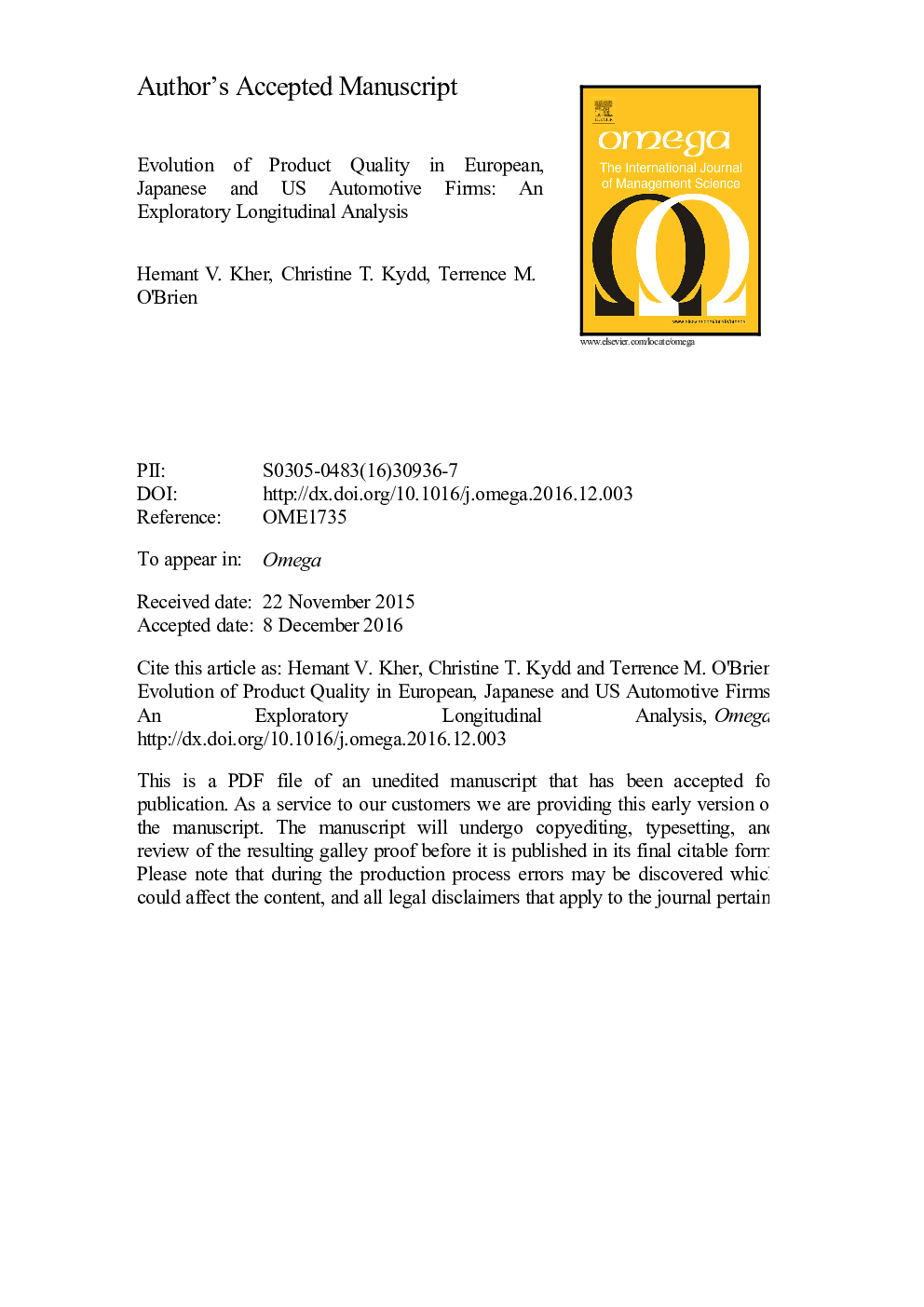| Article ID | Journal | Published Year | Pages | File Type |
|---|---|---|---|---|
| 5111685 | Omega | 2017 | 32 Pages |
Abstract
For years we have been hearing that US automobile manufacturers have been losing market share to their Japanese rivals who are reputed to make better quality vehicles. Most such reports are based on the initial quality surveys on new automobiles. In this paper we address two exploratory questions: (1) how does the quality of an automobile change with its age, and, (2) can firm level variables help explain differences quality. To answer these questions, we collected Consumer Reports' reliability ratings on approximately 300 automobile models made by European, Japanese and US automotive firms during the 1998-2007; and approximately 240 models made by these firms over period of 2008-2015. For both periods we found that not only do automobiles made by Japanese firms have higher initial quality, but, as automobiles get older the difference in the product quality between Japanese versus European and US firms increases. We also found that the more generalist a European or US automobile firm, i.e., the wider is the firm׳s product offering in the marketplace, the lower its overall automobile quality during the 1998-2007 period. Conversely, Japanese generalist firms were found to have higher quality than specialist firms over the same period. The result is partly explained by the fact that Japanese firms have taken a different path to broadening their product variety - they have ensured a high level of quality of their initial offerings before entering newer market segments. The rate of reliability decline was found to be slower for all firms, and the differences in reliability across the 3 groups of firms were much less pronounced during the 2008-2015 period. This improvement may be as result of restructuring done by US automobile firms.
Keywords
Related Topics
Social Sciences and Humanities
Business, Management and Accounting
Strategy and Management
Authors
Hemant V. Kher, Christine T. Kydd, Terrence M. O'Brien,
